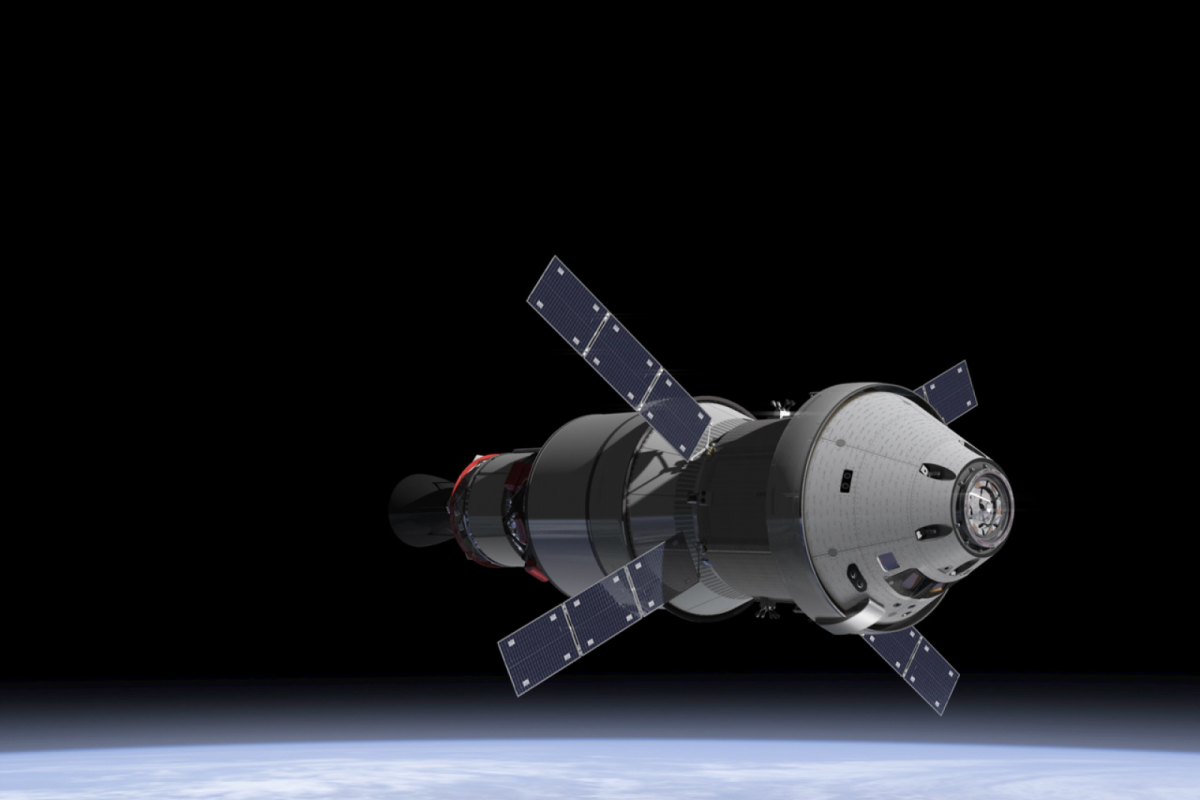Progress is continuing apace as NASA readies its next-generation Orion spacecraft for her maiden flight, dubbed Exploration Flight Test 1 (EFT-1), set to blast off Dec. 4 atop a Delta IV heavy launch vehicle. Once operational, Orion will be the first spacecraft built with the capacity to carry out a manned flight beyond low-Earth orbit since the Apollo era, when man first walked on the moon. NASA boasts that Orion will represent the safest and most advanced spacecraft ever created, allowing man to capture an asteroid and in time, even put a man on Mars.
With assembly completed, Sep. 29 Saw Orion's Delta IV rocket moved to Complex 37 of the Cape Canaveral Air Force Station. This configuration is one of the most powerful launch vehicles available to the agency, comprised of three massive core stages powered by an RS-68 engine. The rocket will soon be lifted into its vertical launch position, ready to embark on the journey that will see Orion catapulted out of Earth orbit, only to come crashing down four hours and 25 minutes later in a process that will test its atmospheric re-entry capabilities to the extreme.
However, whilst the United Launch Alliance-built rocket will serve as a worthy stand in, it will not be the system relied upon to service Orion when she finally becomes operational. That honor goes to the Space Launch System (SLS), a cutting-edge launch vehicle under development by NASA. The initial configuration of the system will have a lift capacity of 70 metric tons (77 tons), and will generate an impressive 8.4 million lb (3.8 million kg) of thrust.
The spacecraft has already undergone a comprehensive regiment of trials designed to test the tolerances and capabilities of each of Orion's vital systems. Having passed each and every challenge that NASA has seen fit to throw at her, the spacecraft was mated with its ESA-constructed service module. Over the course of a manned mission, the service module will provide the crew with the vital supplies and propulsion capabilities necessary to maneuver, and indeed survive in outer space. The final component of the Orion spacecraft, the all-important Launch Abort System (LAS), was installed on Oct. 6.

From a health and safety point of view the Launch Abort System is, by all accounts, quite vital. The system encapsulates the entire crew module, essentially acting as a safety net should any complications arise during the initial launch phase. Once danger is detected, the LAS simply fires its thrusters, carrying the crew out of harm's way in a matter of milliseconds. A failure in this system could potentially lead to a tragedy on the launch pad.
Assuming that there were no issues at launch and Orion reached orbit without incident, the LAS would still boast an alarming capacity to ruin an astronaut's day. This is down to the fact that in an ideal situation, the system is designed to separate from the spacecraft following a successful launch. If, for some reason or another this fails to happen, the LAS will effectively block the deployment of Orion's parachutes once it has re-entered Earth's atmosphere. This would result in a very quick and unpleasant end to a manned mission, so as you can imagine, the LAS will be one to watch during the December proving mission.
With the addition of the LAS, Orion is now considered to be complete. The spacecraft will remain in the launch abort system facility until mid-November, when the finished spacecraft will be mated with the Delta IV launch vehicle.
The following video displays a computer simulation of Orion's maiden test flight.
Source: NASA















